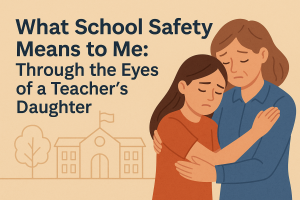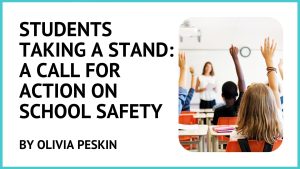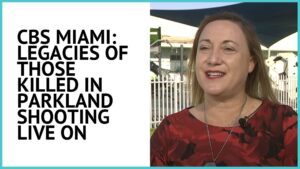
The mass murders of students in schools in the U.S. continues at an alarming pace. Yet, despite the commitment from schools, governments and the private sector to put an end to these horrific acts, they don’t stop. Even though we don’t have the perfect answer we still need to try everything within our POWER to stop the violence. At Make Our Schools Safe we believe that the POWER to make a difference lies with the people.
POWER
PREPAREDNESS
School leaders need to know and understand the threats and hazards that their schools may face and then prepare for a safe response to those incidents and acts. The basic definition of preparedness is the state of being ready for something to happen. Therefore, schools should build resilient programs that allow informed and safe responses. As part of their preparedness programs schools should develop realistic safety and security programs that recognize the threats, both internal as well as external, and train their stakeholders on proper multi-hazard incident responses.
OBSERVATION
Schools are busy places, but our current climate requires that all school personnel be vigilant in observing surroundings. Training and education will help all to know what constitutes vulnerabilities and threats and what to look for. Once personnel learn to be more attentive, they can more effectively activate the school’s plan for see something/say something leading to the most appropriate response from the incident management team. Sometimes it’s just seconds of taking action that averts a crisis.
WILLINGNESS TO ACT
Leadership requires a courageous and decisive stance to protect students, faculty and staff. While school leaders will know how to lead the curriculum, create opportunities for teacher professional learning and manage the school building, they are less likely to know as much about school safety, security and emergency preparedness. Training is, then, essential, as increased knowledge will correlate with a courageous willingness to act. Seeking advice from knowledgeable security experts and committing school resources to emergency planning management will increase the likelihood that leaders will respond with knowledge and confidence to an incident before it becomes a crisis.
EDUCATION
Education is at the core of POWER as people cooperate when they know and understand the what, why and how of the emergency plan. Safety, security and emergency preparedness education and training will empower school stakeholders (students, teachers, staff, visitors, parents, etc.) to follow the coordinated emergency plan. At a minimum, this would include teaching the cadre of response protocols and drills. The most important part of all emergency drills is the emphasis on learning their purpose and how to do them correctly for maximum safety.
RESPONSE
A school can have a robust emergency preparedness training and education program, but if they lack the means to announce and communicate the emergency protocol in response to an incident then chaos will likely ensue. Whatever communication method a school uses, the announcements should be clear and concise, leaving little room for confusion. To announce a response protocol, industry best practice suggests not to use color codes such as red, black or yellow as the stress of the event might cause stakeholders to become confused. Instead, the recommendation is to use plain language such as “lockdown, we have an active assailant situation” or “evacuation, there is smoke in Building Five.” When planning how to communicate for emergency announcements, schools should have a back-up plan in the event one method fails.

By Mike Johnson
Mike Johnson is the Managing Director of Clearpath Alerts LLC, a Fort Lauderdale-based company that provides safety, security, and emergency preparedness technology and training solutions to institutions, corporations and event organizers and planners. Mike is a lead trainer and facilitator for several non-profit education organizations and has provided safety, security and crisis management training to hundreds of school leaders. Mike serves on the Advisory Board of the Center for Mass Violence Response Studies and is also an Advisor to the National Police Foundation’s Averted School Violence program.




















